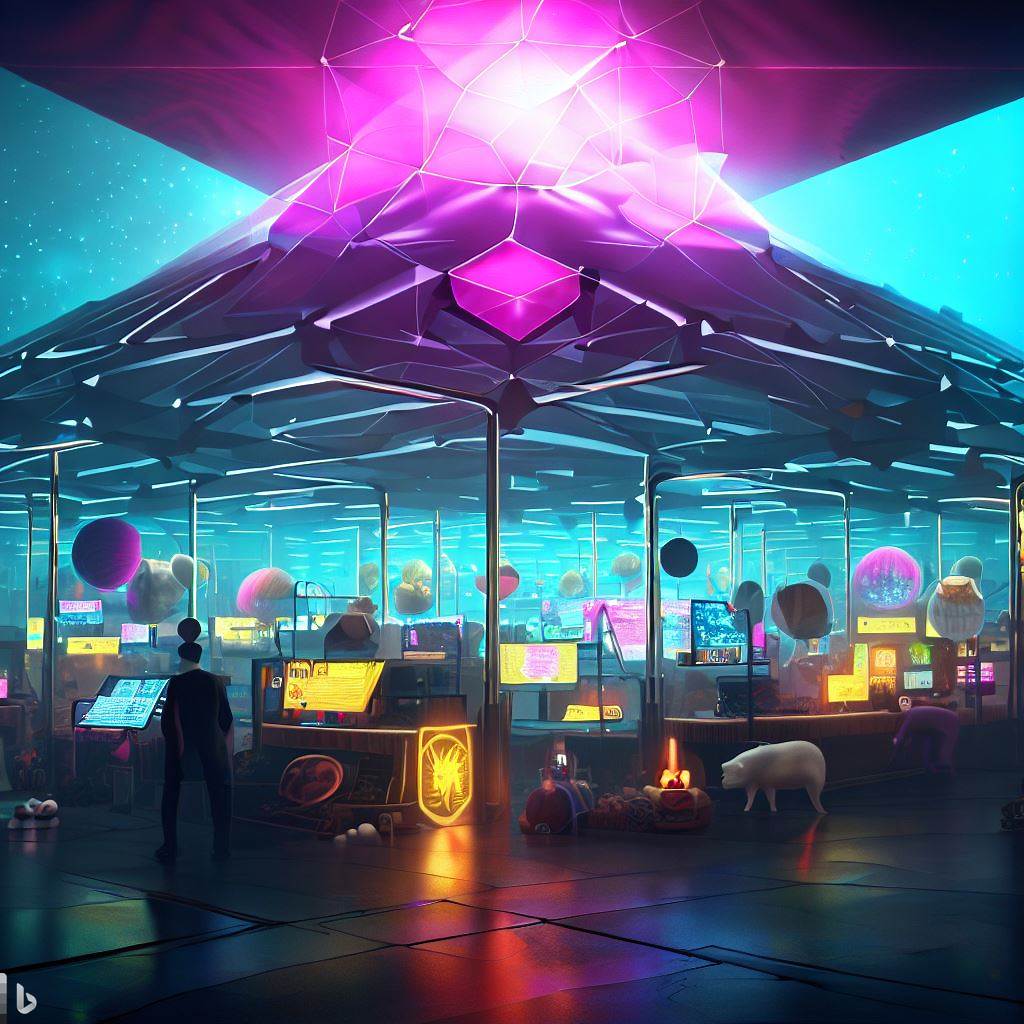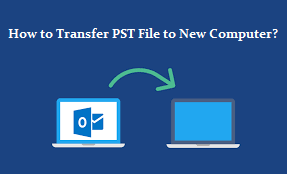In today’s rapidly evolving technological landscape, the concept of the metaverse has taken centre stage. This digital realm, often portrayed in science fiction, has become a tangible reality with the emergence of blockchain technology and non-fungible tokens (NFTs). This article will delve into the fascinating world of a Metaverse NFT Marketplace, exploring its intricacies, potential, and the essential components required for its successful development.
Introduction
The metaverse has evolved from being a concept in science fiction to a digital reality that offers unparalleled opportunities for interaction, commerce, and creativity. At the heart of the metaverse is the idea of a Metaverse NFT Marketplace, a platform that facilitates the exchange of unique digital assets through the use of NFTs.
Understanding the Metaverse NFT Marketplace
A Metaverse NFT Marketplace is a digital platform where users can buy, sell, and trade NFTs within the expansive metaverse. NFTs, or non-fungible tokens, are indivisible and unique digital assets that are secured using blockchain technology. These tokens certify the ownership and authenticity of digital items, whether they are virtual real estate, digital art, collectables, or virtual wearables.
The Significance of NFTs in the Metaverse
NFTs have revolutionized ownership and provenance in the digital realm. Unlike traditional digital files, NFTs cannot be duplicated or replicated, making them truly scarce and valuable. This scarcity is a driving force behind the economic model of a Metaverse NFT Marketplace, where users can leverage their digital creativity and assets to establish a thriving virtual presence.
Key Features of a Metaverse NFT Marketplace
Creating a successful Metaverse NFT Marketplace requires careful consideration of various features that enhance the user experience and promote engagement. These features include:
- Blockchain Integration: The backbone of the metaverse, blockchain technology ensures transparent, secure, and tamper-proof transactions.
- Smart Contracts Implementation: Smart contracts automate and execute transactions, enabling a seamless exchange of NFTs and ensuring trust between parties.
- User Wallets and Identity: User-friendly wallets allow easy storage and management of NFTs, while digital identity systems enhance security and user recognition.
- Digital Asset Management: Efficient tools to upload, display, and manage digital assets are essential for a vibrant marketplace.
Building Blocks of Development
To bring a Metaverse NFT Marketplace to life, several fundamental building blocks must be in place:
Blockchain Integration
Blockchain technology underpins the entire metaverse, providing the necessary security and transparency for NFT transactions. It ensures that ownership and transaction records are immutable and accessible to all participants.
Smart Contracts Implementation
Smart contracts are self-executing contracts with the terms of the agreement directly written into code. They automate the exchange process, enabling seamless and trustless transactions between buyers and sellers.
User Wallets and Identity
User wallets serve as digital vaults for NFTs, allowing users to securely store and manage their digital assets. Implementing robust identity verification processes enhances security and fosters a sense of trust among users.
Digital Asset Management
Efficient tools for uploading, displaying, and categorizing digital assets are crucial. Intuitive user interfaces and search functionalities make it easy for users to explore the marketplace and discover unique NFTs.
User Experience and Interface Design
A user-centred design is pivotal to a Metaverse NFT Marketplace’s success. A seamless and intuitive interface, coupled with engaging visuals, encourages user interaction and prolonged engagement.
Security and Decentralization
Security is paramount in the metaverse, and decentralization plays a vital role. Distributed ledger technology ensures data integrity and prevents single points of failure, safeguarding users’ valuable digital possessions.
Monetization Strategies
Several monetization models can sustain a Metaverse NFT Marketplace. These include transaction fees, subscription models, and exclusive partnerships with creators and brands.
Legal and Regulatory Considerations
Navigating the legal landscape is essential to ensure compliance with intellectual property rights, tax regulations, and user data protection laws.
Future Prospects and Trends
The future of Metaverse NFT Marketplaces is promising, with advancements in virtual reality, augmented reality, and blockchain technology. As more creators and users join the metaverse, the marketplace will likely experience exponential growth.
NFT Marketplace for Metaverse: The Value Behind the Concept
The emergence of the metaverse has unveiled a new horizon of possibilities where digital interactions, experiences, and economies thrive. At the heart of this paradigm shift lies the concept of an NFT marketplace tailored for the metaverse – a dynamic platform where users can buy, sell, and trade non-fungible tokens that represent ownership of digital assets.
Defining the Metaverse NFT Marketplace
A Metaverse NFT Marketplace is a digital space where individuals can transact using NFTs, which encapsulate the uniqueness and authenticity of digital items, ranging from virtual real estate and digital art to wearables and collectables. This marketplace facilitates seamless peer-to-peer exchanges, empowering users to leverage their creativity and resources in the metaverse.
Ownership Redefined: NFTs in the Metaverse
NFTs have fundamentally transformed the concept of ownership in the digital age. Unlike traditional digital files, NFTs cannot be duplicated, forging an unbreakable link between the creator and the digital asset. In the metaverse, NFTs enable individuals to assert their ownership of virtual properties and creations, giving rise to a digital economy built on provable scarcity and uniqueness.
The Unique Value Proposition
The value of a Metaverse NFT Marketplace extends beyond the realm of mere transactions. It offers a unique value proposition that encompasses:
Empowering Digital Creators
Creators, artists, and developers find unprecedented avenues to monetize their digital creations. By tokenizing their work as NFTs, they gain control over their creations and a share of the profits whenever their assets change hands in the marketplace.
Interconnected Virtual Economies
A Metaverse NFT Marketplace acts as a nexus for multiple virtual economies. Users from diverse metaverse platforms can participate in cross-platform transactions, fostering an interconnected ecosystem where digital assets traverse seamlessly.
Fostering Innovation and Collaboration
The marketplace fosters innovation by encouraging collaboration among creators, developers, and users. It becomes a breeding ground for novel ideas, where participants collaborate on projects, refine concepts, and jointly develop new virtual experiences.
Challenges and Considerations
While the concept of a Metaverse NFT Marketplace is captivating, challenges persist. Scalability, user experience, and interoperability between different metaverse platforms require careful consideration. Moreover, legal and regulatory aspects surrounding digital ownership and transactions demand a comprehensive approach.
Future Outlook
The future of the Metaverse NFT Marketplace is promising. As technology advances, virtual reality becomes more immersive, and blockchain evolves, the marketplace will continue to flourish. It will likely become an integral component of the metaverse, enhancing user experiences and contributing to the broader virtual economy.
Metaverse NFT Marketplace Development: Essential Steps
A Metaverse NFT Marketplace serves as a digital marketplace where users can engage in NFT transactions within the metaverse, leveraging the uniqueness and scarcity of these digital assets. To embark on this journey, follow these essential steps:
Conceptualization and Planning
Before diving into development, outline your marketplace’s vision, target audience, and unique selling points. Understand user needs and market trends to refine your concept and create a clear roadmap.
Blockchain Integration
Select a blockchain that aligns with your marketplace’s goals. Ethereum, Binance Smart Chain, and Polygon are popular choices for NFTs. Integrate the chosen blockchain to enable secure and transparent transactions.
Smart Contracts Development
Develop smart contracts that automate NFT minting, listing, and trading. These contracts ensure trust and efficiency by executing predefined actions based on predefined conditions.
User Experience Design
Create an intuitive and visually appealing user interface. Prioritize seamless navigation, user-friendly onboarding, and responsive design to enhance user engagement and satisfaction.
Asset Management System
Design an efficient system for users to upload, list, and manage their NFTs. Implement features such as categorization, search filters, and detailed asset descriptions for a comprehensive user experience.
Security Measures
Implement robust security measures to protect user data and digital assets. Utilize encryption, multi-factor authentication, and cold storage for NFTs to ensure a safe and secure environment.
Monetization Strategies
Explore various monetization models such as transaction fees, listing fees, and premium memberships. Consider partnerships with creators, brands, and metaverse projects to diversify revenue streams.
Legal and Regulatory Compliance
Navigate legal and regulatory considerations, including intellectual property rights, data privacy laws, and tax regulations. Consult legal experts to ensure compliance and build trust among users.
Beta Testing and Iteration
Conduct thorough beta testing to identify and address any bugs, glitches, or user experience issues. Gather feedback from beta testers and iterate on the platform to enhance its functionality and user-friendliness.
Launch and Marketing
Launch your top 10 Metaverse Development Company NFT Marketplace with a comprehensive marketing strategy. Utilize social media, influencers, and targeted advertising to create buzz and attract users to the platform.
Continued Enhancement
Continuously monitor user feedback and market trends to identify areas for improvement. Regularly update and enhance the platform to offer new features, improve user experience, and stay competitive in E-Commerce development.
Conclusion
Developing a Metaverse NFT Marketplace requires a strategic approach that encompasses technology, design, security, and user experience. By following these essential steps, you can create a dynamic platform that empowers users to engage in the exciting world of metaverse NFT transactions.



